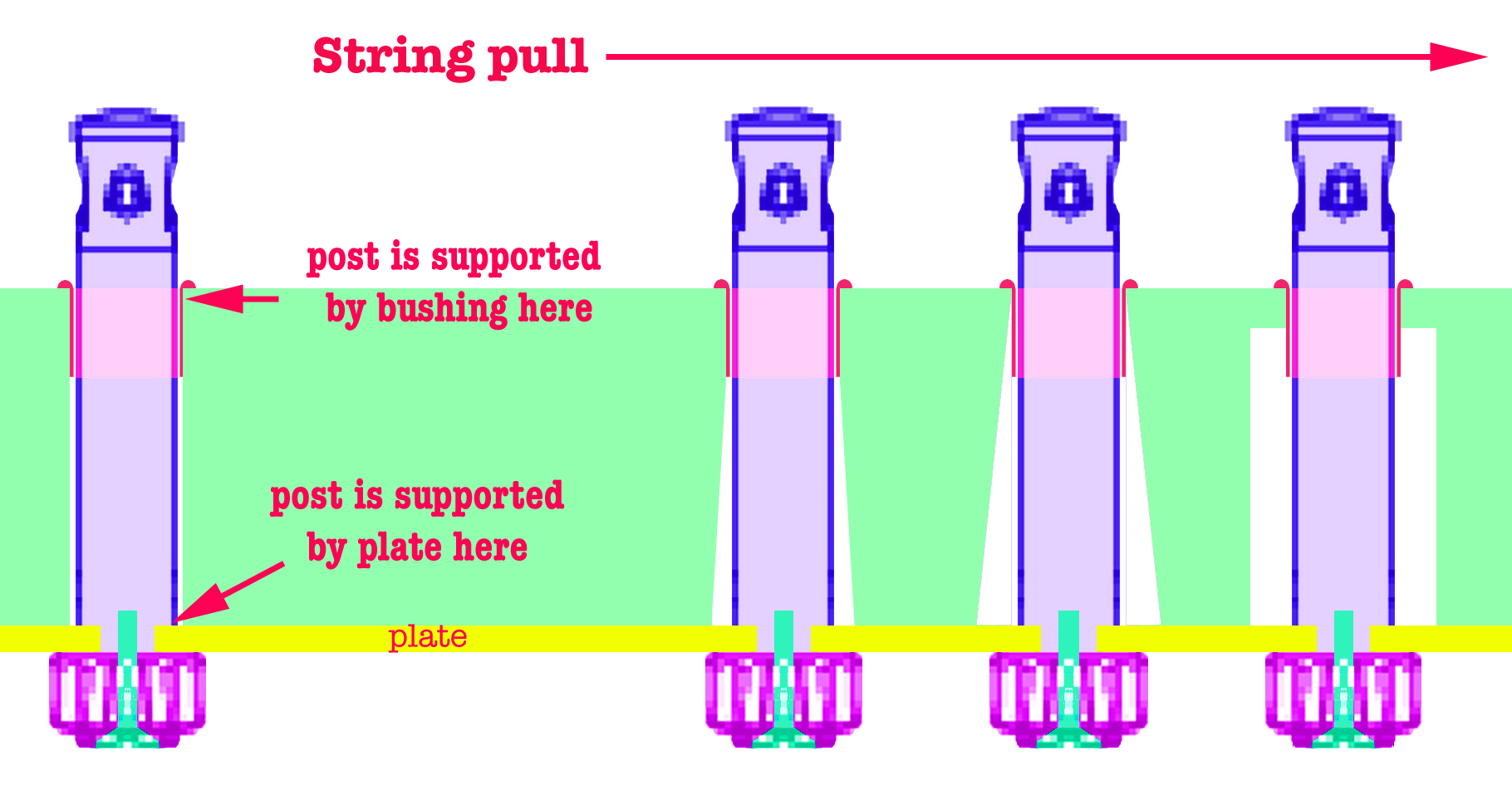In 1982 in England the only replacement tuners were Schaller MNI3, sold as a replacement for Gibson mandolins. A novice, I knew not of spacing and gear orientation. I drilled them (gasp) all the way through to accommodate the fat Schaller ferrules. At the time I was just desperate to have a serviceable mandolin. Please don't hate me for what I did to my 1923 snakehead. I feel bad enough.
Q: Now that Stew-Mac offer the relic replacement tuners, what is the accepted method (actually I'll hire a luthier this time) to plug and drill new holes? I've bought the Loar era jig, too, but my local repair guy says you can't drill down the grain, even with a jig.
Is there a source for cross-grain mahogany(?) dowel for this purpose? The holes now measure ∅ 10.28mm
This is what I've come up with. Is this a good way to go? That's a 3 ⁄8"∅ tapered plug, ¼" deep.
Tags: fitting, holes, mandolin, plug, redrill, retrofit, tuner, tuners
Views: 1259
- Attachments:
Replies to This Discussion
-
If you have a local woodturning club in your area I would be asking if they could help
Turning these on the lathe would be a good way to go.
May be worth reaming the existing holes out to 10,5mm first if they are not perferctly round and uniform.
I would plug full depth of the headstock and start again from there
-
For this I would turn wood bits on my lathe too. Then re-drill and touch-up if necessary.
-
Can't drill "down" the grain? That's a new one on me - I've done it on this kind of job routinely for 40 years. I'd use a serious gap-filling glue like epoxy to glue the dowels to allow for unevenness in the fit, and decent adhesion to end grain of the hole.
To me, the more important issue is the cosmetic treatment of the peghead. Might be time for a new overlay.
-
Thanks, Frank. It was good to talk to you about this the other day. I hope it doesn't need new overlay (are these dyed pear wood, too)?
-
I've only done this kind of repair once, but what I did was take a scrap of closely matching wood, cut it down to a small 4" or so long billet slightly bigger around than the dowels you need. Round one end so it will fit the chuck in a drill press and use a drill press as a vertical lathe- I ran files and sandpaper against it, checking periodically with calipers to leave the dowel just slightly oversize. Final shape & fit by hand. You have to go easy of course and work close to the chuck, or you'll snap the piece. I'd suggest that the plugs not be tapered. This technique is useful for making soundposts too.
Rory
-
Paul, if you are hiring a luthier for this job. He/she should be able to make the plugs.
-
Tanks, Tom~
Unfortunately there are no luthiers locally to whom I would entrusted this. Many times bitten..hence this thread.
I'll be tackling this one myself with the help of a handyman friend, I think.
-
Howdy. The do this job on bowed instruments all the time. You can also find a plug cutter and make your own. You will need a new overlay for sure, unless you like the look of an instrument in progress.
-
All that matters is that the bushings at the face of the headstock align with the true shaft spacing. The shaft is very thoroughly supported at the plate by the plate itself, which is firmly anchored by the screws that hold it to the back of the headstock. AIr space inside the headstock between the plate and the bushings is completely unimportant, and in act is often an advantage.
In other words, you don't need to fill and redrill the holes—you simply need to position the bushings properly. Usually the collar of the bushing will cover the evidence. You have several options:

-
Thanks, Paul, but the holes are bigger than the bushings. I have to fill and drill the bushing 'holder' end at least.
-
Right. That's what I was implying with "...you simply need to position the bushings properly." There are numerous routes to accomplishing this, from completely plugging and redrilling, to lining the tops of the holes, to replacing the headstock overlay, to inlaying a bit of matching wood into the top 1/8" and then redrilling.
Like Frank, I am baffled by someone's remark that one "can't drill "down" the grain." A) one can use a bradpoint bit and drill through anything without regard to grain direction, or B) open the rough hole with a rotary burr of some sort and finish it with a reamer. This would allow you to move the hole off center of the previous one, and align it with the post spacing you want. In any case, if you're neat about it, the bushings will pretty much, if not fully, cover any kind of plugging you might have done.
-
That's some sound advice, Paul. Thanks again for your reply. I'm going the 'plug' route. I have cut some 3/8" face grain plugs, which will be epoxied into the holes. I figured that some linseed oil on the faceplate should buy me a little time while I gingerly removed the pushed up excess epoxy
I'll take some photos to post later.
© 2025 Created by Frank Ford.
Powered by
![]()